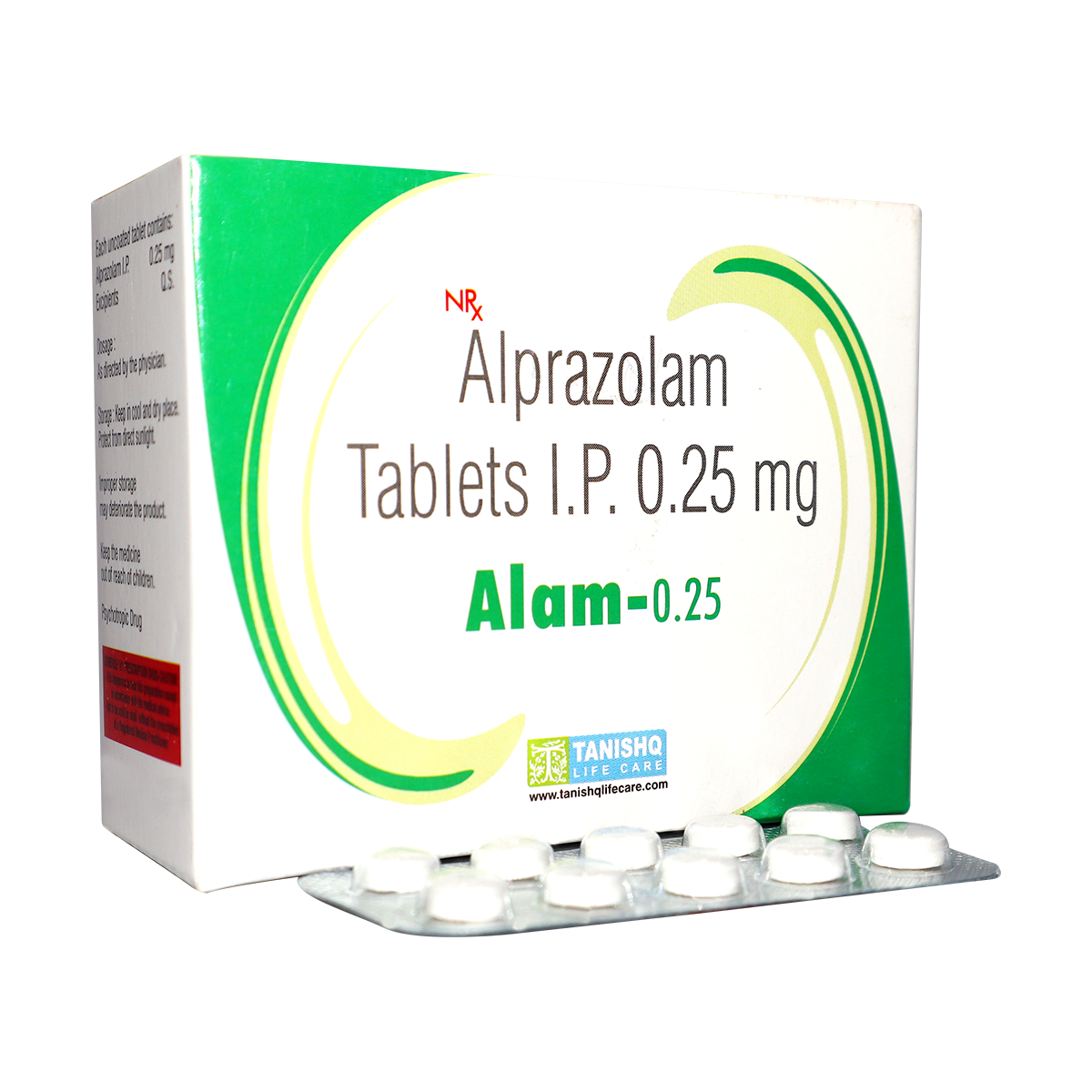
Alprazolam 0.25mg Tablet
Alprazolam is a benzodiazepine medication primarily used to treat anxiety disorders, panic disorders, and sometimes insomnia. It works by depressing the central nervous system (CNS), producing a calming effect by enhancing the action of a neurotransmitter called GABA (gamma-aminobutyric acid).
- Recommended Usage
Indications
- Generalized Anxiety Disorder (GAD): To relieve symptoms of excessive worry and nervousness.
- Panic Disorder: To reduce the frequency and severity of panic attacks.
- Short-term management of anxiety and related disorders.
- Off-label use: Insomnia, sometimes used for muscle relaxation or sedation.
Dosage and Administration
Initial Dose: Typically, 0.25 mg to 0.5 mg taken 2-3 times daily depending on the severity of the condition.
Maintenance Dose: May be increased gradually (usually by 0.25 mg to 0.5 mg increments) until the desired effect is achieved, usually not exceeding 4 mg/day.
Elderly or Debilitated Patients: Start at 0.25 mg once or twice daily and adjust based on response and tolerance.
Duration of Use: Generally recommended for short-term use due to the potential for tolerance, dependence, and withdrawal symptoms.
Precautions
Tolerance and Dependence: Long-term use can lead to tolerance (requiring higher doses for the same effect) and physical dependence. This risk is increased with higher doses or prolonged use.
Withdrawal: Abrupt discontinuation can lead to withdrawal symptoms, including anxiety, insomnia, irritability, muscle cramps, sweating, and, in severe cases, seizures. It is recommended to taper the dose gradually.
CNS Depression: Alprazolam can cause significant sedation, drowsiness, and impair cognitive and motor functions. Caution is needed when performing activities requiring alertness (e.g., driving).
Elderly: Higher sensitivity to side effects such as sedation, dizziness, and impaired coordination. Dose adjustments are recommended.
Liver and Kidney Impairment: Alprazolam should be used cautiously in patients with liver or kidney dysfunction. Lower doses may be required.
Alcohol and Drug Interaction: Concomitant use with alcohol or other CNS depressants (e.g., opioids, barbiturates, sedatives) can lead to severe respiratory depression, coma, or death.
Pregnancy and Breastfeeding: Should be avoided during pregnancy, especially in the first trimester, unless the benefit outweighs the risk. Alprazolam can pass into breast milk and may affect a nursing infant.
Product Category
- Anti Infective
- Injectables
- Pre Filled Syringe
- Immunosuppressants
- Anti Ulcerant/ppis
- Joint Care
- Enzymes
- Heamatinic Agents
- Antioxidant Multivitamins
- Laxatives
- Anti Alergic
- Corticosteroids & Combinations
- Anti Fungal
- Medicated Soaps
- Emollients and Moisturisers
- Face Care
- Puva & Sun Protectors
- Hair Care
- Anti Acne Preparation
- Analgesics Antipyretics & Anti Inflammatory
- Anti Spasmodic & Anti Emetic
- Expectorants Antitussives & Mucolytics
- Antidiarrheals
- Cardiac Drugs
- Antipsychotics
- Anti Epileptics
- Migraine
- Anti Dyspetic
